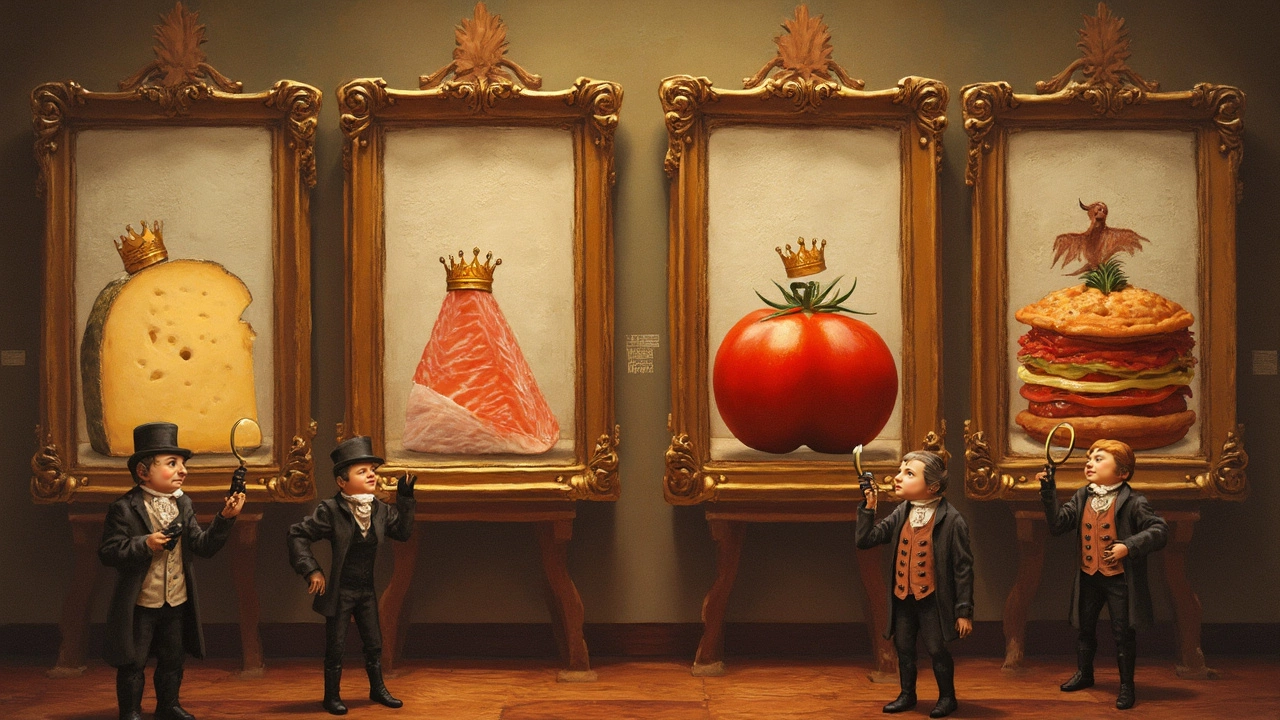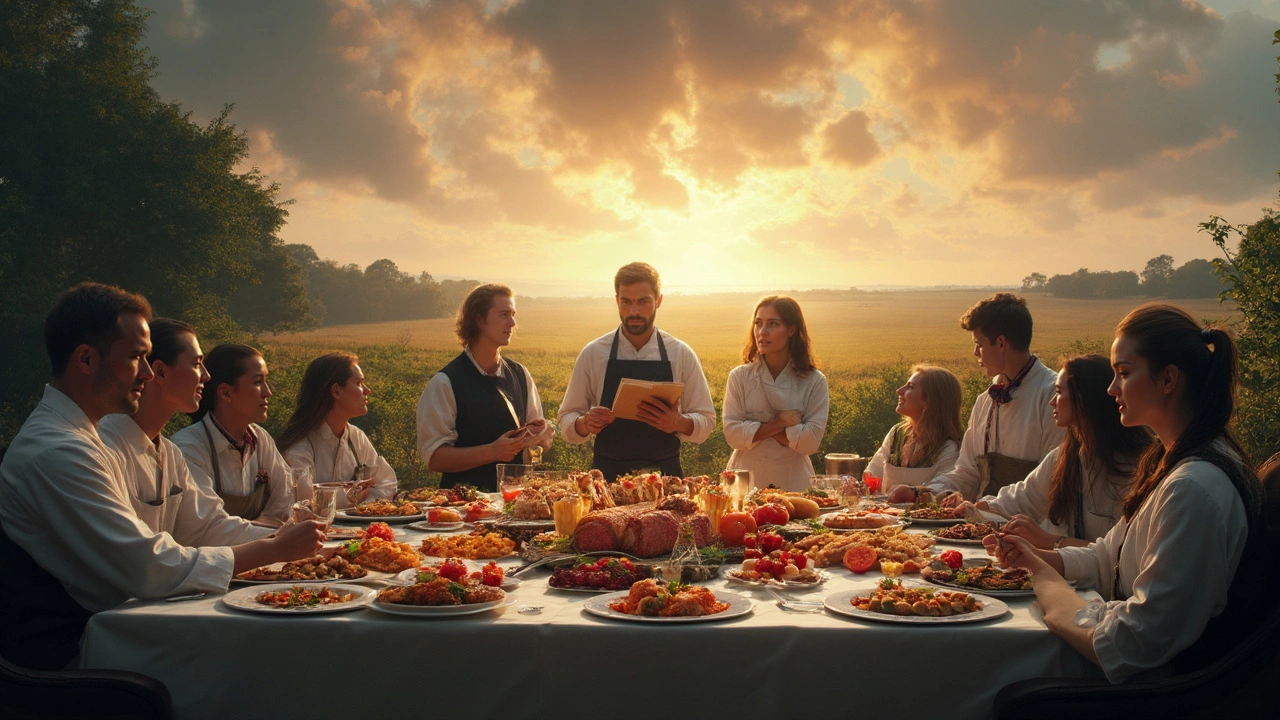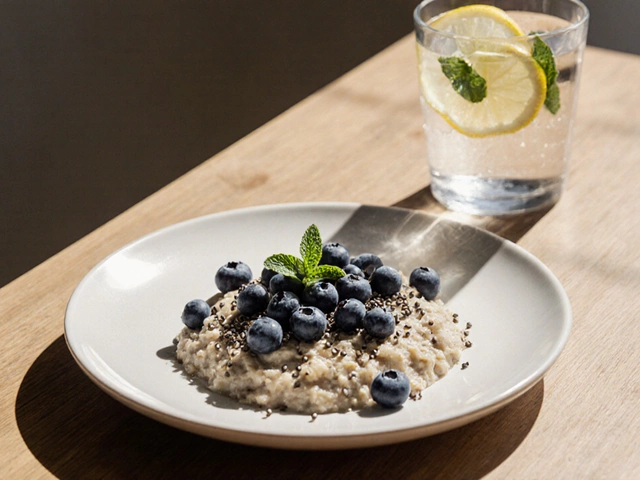Try to picture a food that has ruled tables for centuries, worshiped by chefs and casual eaters alike. For some, it’s all about taste. For others, it’s the nutrition, the satisfaction, or even the deep history tied to a humble meal. Arguments break out everywhere—between rival cities, households, and even work break rooms—over what food tops them all. Is it pizza, with its endless topping combos? Maybe bread, that simple star of every culture? Or rice, quietly feeding half the world? People back up their favorites with science, stats, and pure stubborn love. So, which food deserves to be crowned as the "king of all foods"? The answer is messier (and tastier) than you’d think.
The age-old debate: What makes a food the king?
Let’s be honest: Our answers are stacked by more than flavor. What actually puts a food ahead of all others? First, history cannot be ignored. Dishes like bread have been baked, broken, and shared for more than 30,000 years. That’s not a typo. Fossilized crumbs from ancient ovens—some even found in modern-day Jordan—prove bread is older than agriculture. People kneaded wild seeds into dough long before fields of wheat became a thing.
But maybe history isn’t enough. Look at rice, the quiet workhorse of both ancient China and modern Asia—feeding billions every single day. In fact, more calories are eaten worldwide from rice than any other single food. Still, is "most widespread" the same as "best"? Not always. The king of all foods also needs to deliver nutrition. Eggs are an underdog here, quietly packing protein, healthy fats, vitamins, and minerals into a package so versatile it's eaten for breakfast, lunch, or dinner in every language. Scientists once feared cholesterol, but new research shows eating eggs doesn’t mess with most people's cholesterol levels. Don’t blame your Sunday omelette.
You also can’t ignore flavor—the thing that gets us out of bed for that first bite. Tomatoes are a good example. Only a few hundred years ago, they freaked out Europeans—who thought they were poisonous—but now they’re the backbone of Italian food. Even the humble potato, once blamed for leprosy (seriously), ended up fueling armies and saving countries from famine. The foods with long, dramatic stories often keep winning our hearts—and plates.
Let’s not leave out influence. Bread is eaten by nearly every major civilization, from flatbreads in the Middle East to fluffy French baguettes. Cheese, once just a creative way to store milk, is now a billion-dollar industry. The king of food, if we really want to crown one, should reach across the globe—common in street markets, home kitchens, and royal banquets alike.

The contenders: Breaking down the best foods
Think about pizza’s sheer popularity. In the US alone, 3 billion pies are sold yearly. Pizza brings everything to the table—bread, cheese, veggies, meats, anything you can imagine. It’s flexible. But is it healthy? If you pick your toppings smartly, it can be. But piled high with greasy meats, it’s…well…deliciously wrong.
Then, there’s sushi—simple, elegant, and with flavors that don’t jam your senses. It’s lean, tasty, and believed to help with longevity (Okinawans, who love sushi, often live past 90). But not everyone loves raw fish—plus, it can get pricey. Burgers win the comfort battle, but anyone who’s snoozed after a double bacon cheeseburger knows how heavy things can get.
Let’s look at rice. Rice doesn’t just feed more people than any other food—it’s almost always the background singer, rarely the soloist. It holds up curries, stir-fries, burritos, and even desserts. But it lacks the big punch of vitamins and protein unless you jazz it up or choose brown rice.
Bread, now, is the carby king—but not all loaves are built the same. Sourdough, which ferments naturally, has a lower glycemic index and is easier to digest. Whole-grain breads bring in fiber and micronutrients. White bread? Not so much. But nothing beats that smell—seriously, the aroma of fresh bread can actually lower stress by triggering nostalgia and comfort memories in your brain.
Potatoes are like kids in a costume box—roasted, mashed, fried, scalloped—the options never end. Potatoes deliver vitamin C, fiber, and potassium, and new studies say eating them (without drowning them in oil) can help with blood pressure. Yet, their fried side is what gets most love.
Eggs win the nutrition game, packing nine essential amino acids and choline (great for memory). They fit into nearly every country’s traditional meals—from French omelets to Chinese tea eggs. And they’re cheap. If you had to pick a "utility player," eggs might just take it.
Finally, cheese—one food, thousands of forms. There’s sharp cheddar from England, creamy brie from France, and smoky provolone from Italy. Cheese is rich in calcium and fat, and small cuts pair with fruits, salads, or just bread. But lactose intolerance can sideline a lot of fans, especially in places like East Asia, where lactose digestion isn’t common.

Crowning the food king: The real answer
The truth? There’s no single food that ticks every box. But if you were stuck on a deserted island, and could only eat one thing forever, you’d want something that doesn’t just taste great, but packs nutrition and keeps you satisfied. Bread wins for history and reach. Rice takes home "most reliable background player." Eggs quietly ace the nutrition game. Pizza wins for sheer happiness. But if one food wears the crown across health, history, flavor, and global impact, the humble rice probably has the strongest claim.
Rice has boosted civilizations, survived empires, and still feels right at home in everything from sushi to pudding. Archaeologists traced rice farming back to 9,000 years ago in China—long before the West even knew what “grain” meant. Some villages along the Yangtze River have eaten rice non-stop for three hundred generations. Isn’t that wild? Asia counts rice as its daily staple, and some linguists say the Chinese word for "meal" is the same as the word for "rice." In Thailand, the greeting is "Have you eaten rice yet?" Instead of "How are you?" That’s how deep this food runs.
What about health? Brown rice offers fiber, protein, and essential minerals. White rice isn’t villainous but packs less nutrition, so go for unprocessed grains when you can. Pair rice with beans and you’ve got a complete protein source—a fact not lost on anyone who loves Mexican food or Caribbean feasts. NASA even considers growing rice on other planets, since it’s so easy to store, plant, and eat.
Rice’s humble taste isn’t a bug—it’s a feature. It blends with bold curries in India, delicate sashimi in Japan, rich Cajun spices in Louisiana, or sweet coconut milk in Thailand. You can serve it to princes or pack it for lunch. Who else can say that?
Tips for making rice more than a sidekick? Try switching to black or red rice—they have more antioxidants than blueberries. Cold, leftover rice makes perfect fried rice or rice salads (plus, it has a lower glycemic impact). Mix herbs or lean protein in, and you’ve got a powerhouse meal. Store in airtight containers so it doesn’t dry out and use a rice cooker for perfect texture—trust me, the difference is comical.
Of course, your own king of foods might be something you grew up with—mac and cheese, buttery naan, spicy kimchi. The real "king of all foods" is the one you return to over and over, that feeds your body and your story. But if you’re ranking by survival, influence, nutrition, and legendary staying power, rice wins by a landslide. Next time you scoop a spoonful, take a second to appreciate you’re eating like kings before us—and kings yet to come.


